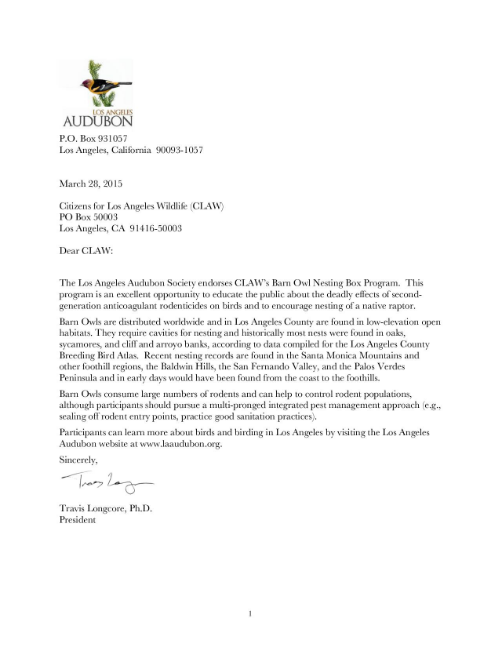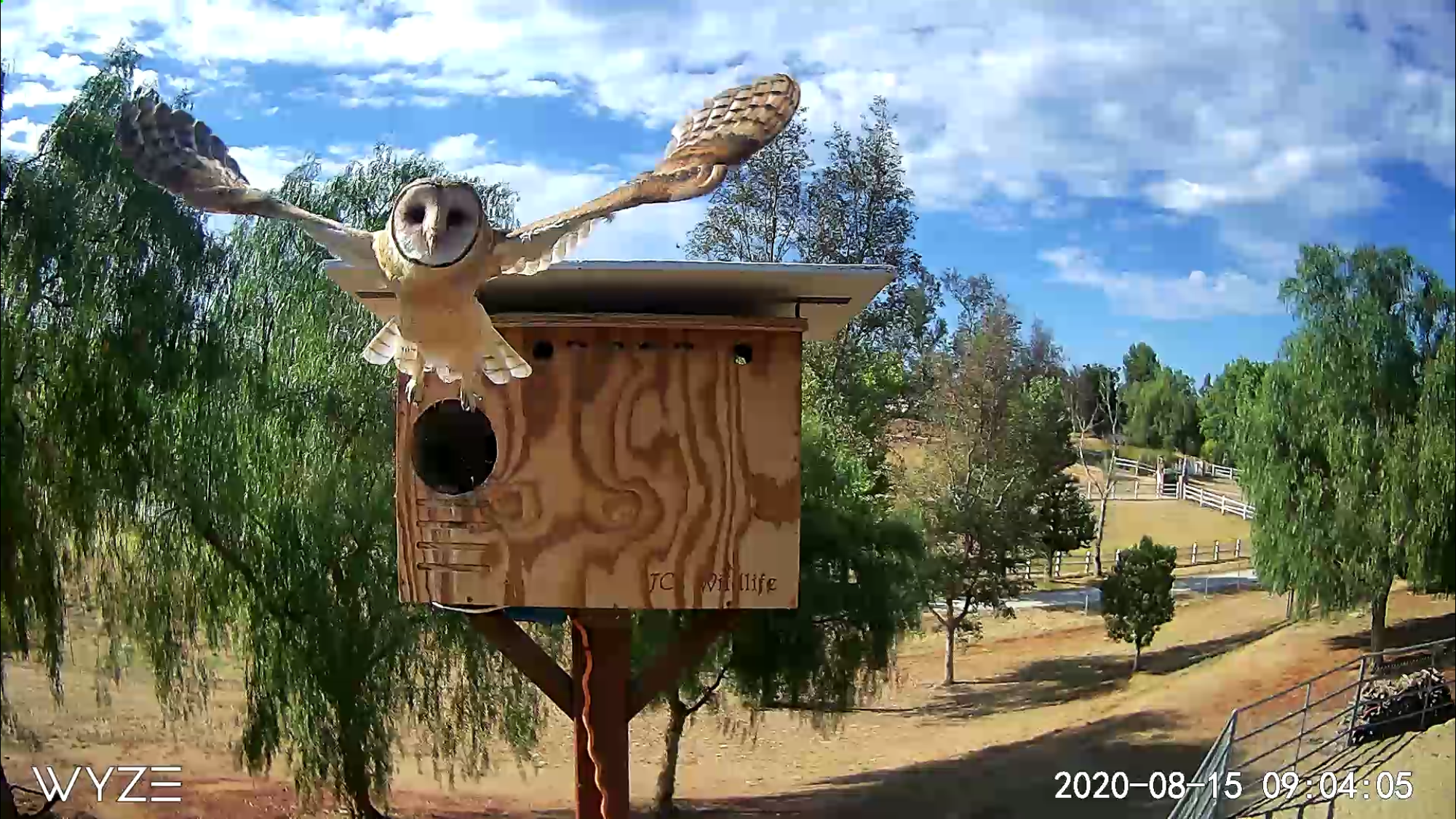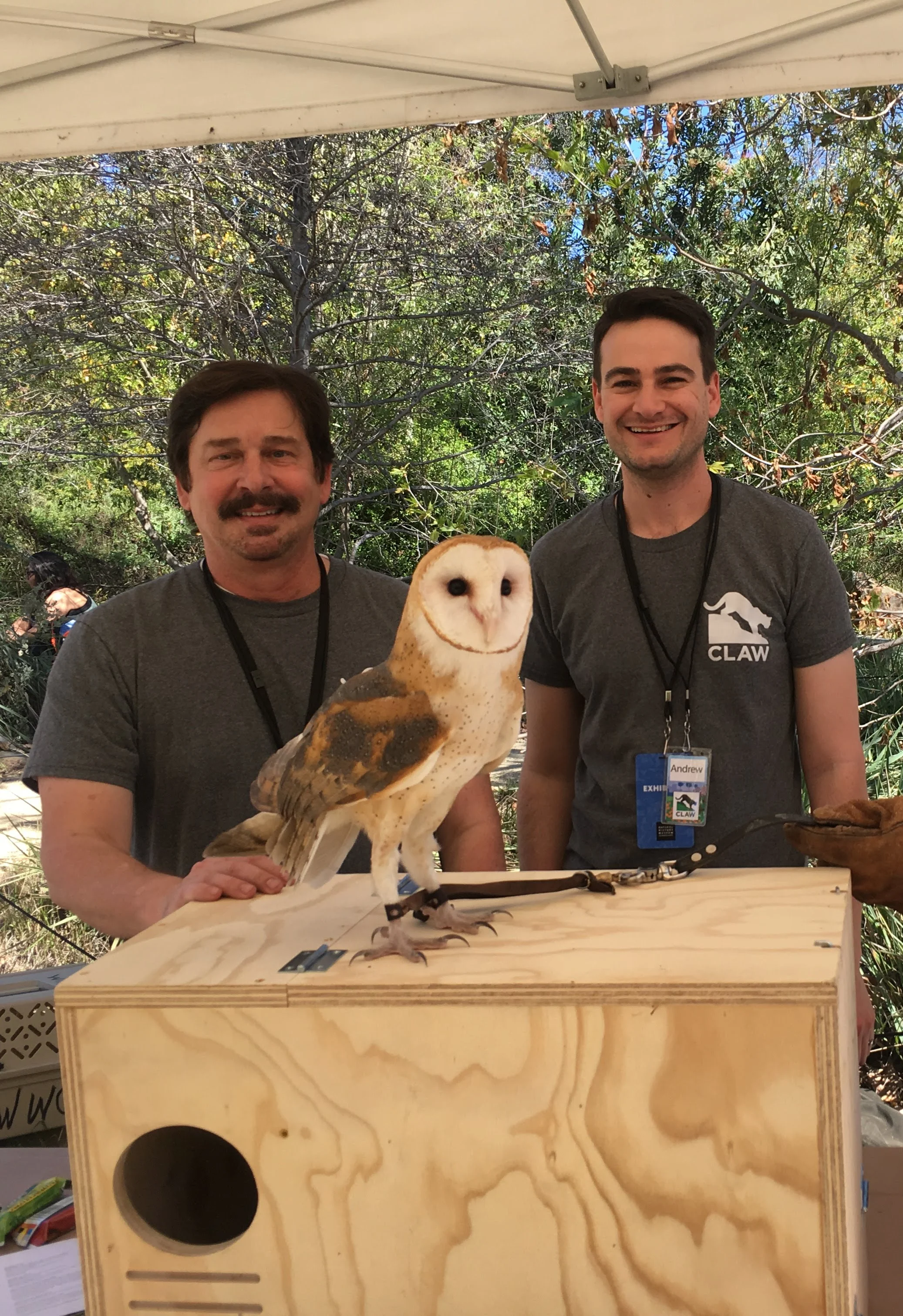Important Update about Availability: CLAW has updated the Barn Owl Nesting Box Program to align more closely with the barn owl breeding season. We will not have new boxes in our CLAW Shop between April and September.
“Historically, in our foothills there would have been a lot of oaks and sycamore that we have removed. Cavities in trees are what many species use to nest in, which we get rid of in an urban environment. So this is reintroducing a resource to the environment that would have been there historically.”
LA Audubon Society Endorses Barn Owl Box Program
Los Angeles Audubon Society endorses CLAW's Barn Owl Nesting Box Program. Read the full endorsement here.
“This program is an excellent opportunity to educate the public about the deadly effects of second-generation anticoagulant rodenticides on birds and to encourage nesting of a native raptor.”
Enhancing the Urban Forest
The Barn Owl Nesting Box Program is part of CLAW's commitment to ending the use of rodent poison (rodenticide) in Los Angeles and beyond. Rodenticide is extremely dangerous to the wildlife populations that live where urban and natural worlds interact.
Just one barn owl can consume over 3,000 rodents a year and are already being used to control rodent populations in vineyards, farms and ranches around the world. Luckily, barn owls have a high tolerance for humans and often choose to nest in proximity to us, making perfect neighbors even in an urban setting.
About Barn Owls
Photo Credit: Cheryl Tokle
Barn owls are one of three species of owls native to Los Angeles.
Barn owls are a permanent source of rodent control without pesticides or chemicals.
Since the largest prey a barn owl can capture is a rodent, they are not a threat to pets.
The more barn owl boxes we place in a community, the greater the odds are that the owls will find and nest in them. Second and third generation owls will then return to the nests.
Barn owls can lay two clutches of owlets a year.
Getting Ready for Your Box
First, we ask you to visit your closest neighbors and tell them you will be hosting a Barn Owl Nesting Box. We suggest that you download our Barn Owl Box Program flyers to educate them about the effects of rodenticide and the role that a Barn Owl will play in controlling the rodent population if it nests in your neighborhood. We recommend that a neighborhood become poison-free for at least three months before installing a nesting box. This will prevent your owl from succumbing to secondary rodenticide poisoning.
Nesting box orders are placed in the CLAW Shop section of the website, and 50% of your order is considered a tax deductible donation. Once ordered, our volunteers will promptly begin the process of crafting your box.
We provide instructions that show how you or a handyman can mount the box, how to care for the box, and 10 program flyers to distribute to neighbors.
A Barn Owl's nesting season is at least once a year, sometimes twice. The rest of the year, the owls will stay in the area but won't need a box.
Rodents, Poison and You
Owls alone might not solve your rodent problem, but please don't use poison. Traditional rat traps, electric zappers or an abatement specialist can be very effective without poisoning other wildlife. For more abatement practices and alternate solutions, click here.
Barn Owl Nesting Box Program FAQs
Do you provide an owl?
No. The idea is that nature will run its course and an owl will make the decision to nest within your box.
Are barn owls native to LA?
Barn owls are native to Los Angeles and due to habitat loss, they have become harder to find here in our great city.
What do they eat?
They dine on all types of rodents, including gophers, and are quite the hunters! They are generally most active at dusk and dawn, and they will typically leave their nesting site in search of suitable grass areas in which to hunt. One barn owl family can consume 3,000 rodents per year!
How big are barn owls?
Barn owls are generally 13-16 inches in length and weigh anywhere from 1 - 1.5 lbs.
What if my neighbors use rodent poison, can I have a barn owl box?
When looking to introduce this program to the neighborhood, the more poison-free, the better. Rodents that have been poisoned can take up to 10 days to die, traveling from house to house, and can gravely endanger the predator that may eat it; including barn owls, mountain lions, red tailed hawks and more.
Will a barn owl eat my small dog or cat?
No. Barn owls stick to their diet of smaller rodents, gophers, etc. They are not going to be interested in your household pet.
If I have a barn owl box, how long until my first barn owl arrives?
Bringing a barn owl nesting box into the neighborhood is not a guarantee that a barn owl will come immediately, or even at all. However, it is an environmentally sound way to curb rodent issues through natural predators versus poison allowing our entire ecosystem to grow and benefit.
When is nesting season for barn owls?
Breeding season typically takes place during spring or into summer. This continues to vary and get earlier in the year due to climate change.
How many eggs will they lay?
Typically 4-6 eggs are laid in one clutch. Clutches laid earlier in the year are usually larger than those that occur later. Not all of the eggs will hatch, 4 is the average, and some may be infertile.
Can barn owls live near great horned owls?
Yes and no. All different sized animals exist together in nature. It is possible a barn owl may be considered a threat by the barn owl. It is also possible it may not be.
Can a different owl nest in my box?
Yes. We have had cases of other similarly sized owls taking up residence in the barn owl nesting boxes. However, larger owls will not be able to fit into the nesting box.
What do barn owls sound like?
Barn owls don’t hoot the way great horned owls do. Instead they emit a long screech, made mostly by the male. A softer, more wavering purring call may also be heard.
Why do we want barn owls in our neighborhood?
Bringing barn owls back into their native habitat is a wonderful way to naturally affect the rodent population in a sustainable, safe, and environmentally sound way.
Ready to install your own Barn Owl Nesting Box?
To order your box, click on the nesting box photo at the CLAW Shop.







